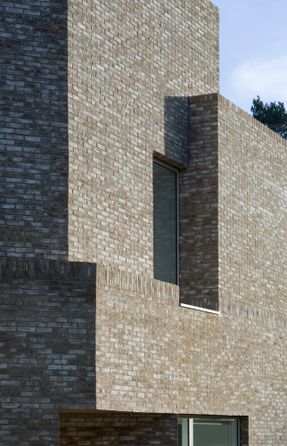Stowe School
ARCHITECTS
Mica
FORM OF CONTRACT
JCT Intermediate with Contractors Design
STRUCTURAL ENGINEER
Price & Myers
MANUFACTURERS
Kahrs, Velfac, Burmatex
PROJECT MANAGER
Stowe School
ACOUSTIC CONSULTANTS
Sandy Brown Associates
LANDSCAPE CONSULTANTS
Quartet Design
CAD SOFTWARE USED
Microstation
APPROVED BUILDING INSPECTOR
Salus
MAIN CONTRACTOR
Stepnell
CDM COORDINATOR
Vance Miller Health and Safety
PHOTOGRAPHS
Richard-Chivers
CLIENT
Stowe School
M&E CONSULTANT
RED Engineering Quantity Surveyors Michael Edwards & Associates
CONSTRUCTION COST PER M2
£3,890
CONSTRUCTION COST
£2.8m
AREA
800 m²
LOCATION
Buckinghamshire, UK
YEAR
2017
CATEGORY
House
Text description provided by architect.
In the southwest of Stowe Gardens, a new girls’ boarding house has been introduced into the setting of one of the pre-eminent examples of the English Landscape Movement.
Path, topography, woodland, and surrounding massing are playfully integrated in response to the setting. Arranged over two blocks linked at high level, the silhouette is refracted into groupings of taller volumes framed by terraces and parapets.
An outskirt of the pleasure gardens, the landscape apron has long been a place for surprise and delight. The path is enclosed by solid walls of finely detailed brick and sentried by a solemn drum and tower elements, into a small courtyard.
Sheltered at the edge of a long dividing strip of structured woodland known as Pyramid Wood or Rook Spinney defining the edge of the Western Gardens, the area is concealed from the historically constructed grazing land once of English longhorns and rare breeds.
In the undergrowth, a ruined foundation and base of Vanbrugh’s last work at Stowe is still visible; a 60-foot Egyptian-style pyramid, completed by Gibbs after Vanbrugh’s death and dedicated to his memory.
Since Stowe School’s founding in 1923, there has been incremental development along the fringe of the Western Gardens and inside the linear tree belt.
Bedrooms at ground are sheltered by the deep set tree belt offering long views across the open landscape. In 1935 R Fielding Dodd added a set of three repeating outlying masters’ residences known as the Home Park Houses.
Datums are taken from adjacent houses – the common eaves level marks a parapet, with a soldier course regulating ground and first floor divisions.
A snaking path links the Home Park boarding settlement to the main school campus to the north, cranking through woods and over sloping ground to meet a cluster of two-storey houses.
From these guides, volumes shift, rise and fall in curtains of brick. The plan is split into two blocks, a low- lying two-storey block with external terrace and main shared facilities.
The second is partially sunken into the ground plane over three floors and connected by a bridge over the path running between.
Now sheltered by mature trees from the historic landscape, the Neo-Georgian street is a suburban adjunct to the Arcadian dream.
Windows are loosely arranged in open plan spaces or aligned behind stacks of accommodation, in crisp white arrangements.
The three houses are connected by single storey wings traced by a brick string course and a common eaves level marking tall chimneys and steep pantile roofs. A faintly noticed change in brick pointing above the string course rewards closer observers.
Utilising the path, the new accommodation runs alongside the three houses, continuing a loose concatenation of line, materiality and form, enclosing a courtyard as a bridging element to the fourth house.
The adjacent houses are simple rectangular footprints of earthy brown brick tones and white steel framed windows. The site hugs tightly to the houses and outbuildings, performing as a gateway to the landscape.



















